White Box Testing
The box testing approach of software testing consists of black box testing and white box testing. We are discussing here white box testing which also known as glass box is testing, structural testing, clear box testing, open box testing and transparent box testing. It tests internal coding and infrastructure of a software focus on checking of predefined inputs against expected and desired outputs. It is based on inner workings of an application and revolves around internal structure testing. In this type of testing programming skills are required to design test cases. The primary goal of white box testing is to focus on the flow of inputs and outputs through the software and strengthening the security of the software.
The term ‘white box’ is used because of the internal perspective of the system. The clear box or white box or transparent box name denote the ability to see through the software’s outer shell into its inner workings.
Developers do white box testing. In this, the developer will test every line of the code of the program. The developers perform the White-box testing and then send the application or the software to the testing team, where they will perform the black box testing and verify the application along with the requirements and identify the bugs and sends it to the developer.
The developer fixes the bugs and does one round of white box testing and sends it to the testing team. Here, fixing the bugs implies that the bug is deleted, and the particular feature is working fine on the application.
Here, the test engineers will not include in fixing the defects for the following reasons:
- Fixing the bug might interrupt the other features. Therefore, the test engineer should always find the bugs, and developers should still be doing the bug fixes.
- If the test engineers spend most of the time fixing the defects, then they may be unable to find the other bugs in the application.
The white box testing contains various tests, which are as follows:
- Path testing
- Loop testing
- Condition testing
- Testing based on the memory perspective
- Test performance of the program
Path testing
In the path testing, we will write the flow graphs and test all independent paths. Here writing the flow graph implies that flow graphs are representing the flow of the program and also show how every program is added with one another as we can see in the below image:
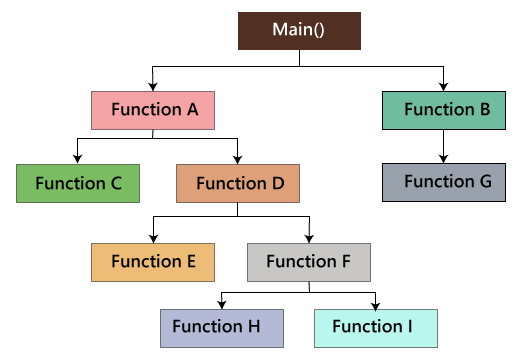
And test all the independent paths implies that suppose a path from main() to function G, first set the parameters and test if the program is correct in that particular path, and in the same way test all other paths and fix the bugs.
Loop testing
In the loop testing, we will test the loops such as while, for, and do-while, etc. and also check for ending condition if working correctly and if the size of the conditions is enough.
For example: we have one program where the developers have given about 50,000 loops.
We cannot test this program manually for all the 50,000 loops cycle. So we write a small program that helps for all 50,000 cycles, as we can see in the below program, that test P is written in the similar language as the source code program, and this is known as a Unit test. And it is written by the developers only.
As we can see in the below image that, we have various requirements such as 1, 2, 3, 4. And then, the developer writes the programs such as program 1,2,3,4 for the parallel conditions. Here the application contains the 100s line of codes.
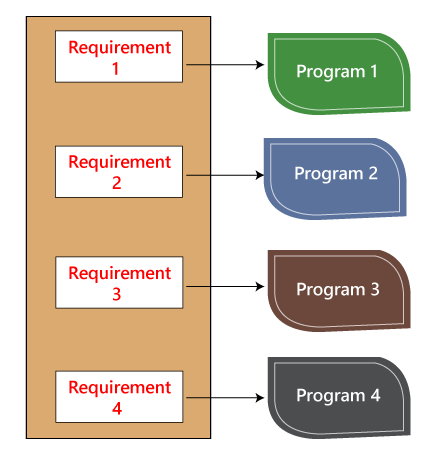
The developer will do the white box testing, and they will test all the five programs line by line of code to find the bug. If they found any bug in any of the programs, they will correct it. And they again have to test the system then this process contains lots of time and effort and slows down the product release time.
Now, suppose we have another case, where the clients want to modify the requirements, then the developer will do the required changes and test all four program again, which take lots of time and efforts.
These issues can be resolved in the following ways:
In this, we will write test for a similar program where the developer writes these test code in the related language as the source code. Then they execute these test code, which is also known as unit test programs. These test programs linked to the main program and implemented as programs.
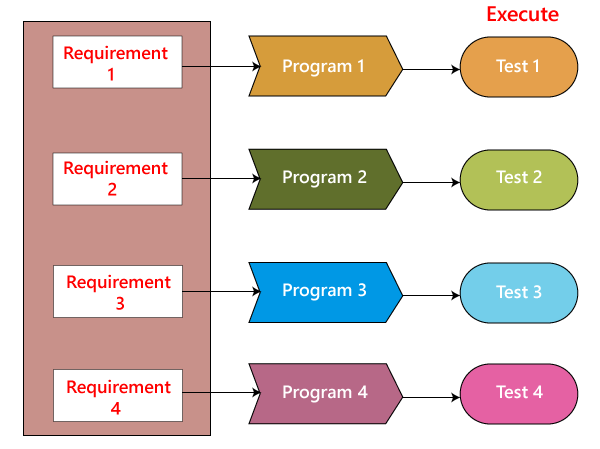
Therefore, if there is any requirement of modification or bug in the code, then the developer makes the adjustment both in the main program and the test program and then executes the test program.
Condition testing
In this, we will test all logical conditions for both true and false values; that is, we will verify for both if and else condition.
For example:
The above program will work fine for both the conditions, which means that if the condition is accurate, and then else should be false and conversely.
Testing based on the memory (size) perspective
The size of the code is increasing for the following reasons:
- The reuse of code is not there: let us take one example, where we have four programs of the same application, and the first ten lines of the program are similar. We can write these ten lines as a discrete function, and it should be accessible by the above four programs as well. And also, if any bug is there, we can modify the line of code in the function rather than the entire code.
- The developers use the logic that might be modified. If one programmer writes code and the file size is up to 250kb, then another programmer could write a similar code using the different logic, and the file size is up to 100kb.
- The developer declares so many functions and variables that might never be used in any portion of the code. Therefore, the size of the program will increase.
For example,
In the above code, we can see that the integer a has never been called anywhere in the program, and also the function Create user has never been called anywhere in the code. Therefore, it leads us to memory consumption.
We cannot remember this type of mistake manually by verifying the code because of the large code. So, we have a built-in tool, which helps us to test the needless variables and functions. And, here we have the tool called Rational purify.
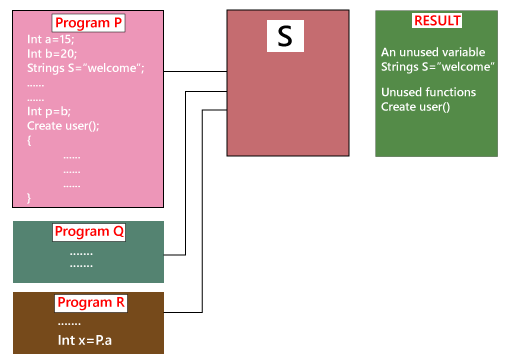
Suppose we have three programs such as Program P, Q, and R, which provides the input to S. And S goes into the programs and verifies the unused variables and then gives the outcome. After that, the developers will click on several results and call or remove the unnecessary function and the variables.
This tool is only used for the C programming language and C++ programming language; for another language, we have other related tools available in the market.
- The developer does not use the available in-built functions; instead they write the full features using their logic. Therefore, it leads us to waste of time and also postpone the product releases.
Test the performance (Speed, response time) of the program
The application could be slow for the following reasons:
- When logic is used.
- For the conditional cases, we will use or & and adequately.
- Switch case, which means we cannot use nested if, instead of using a switch case.
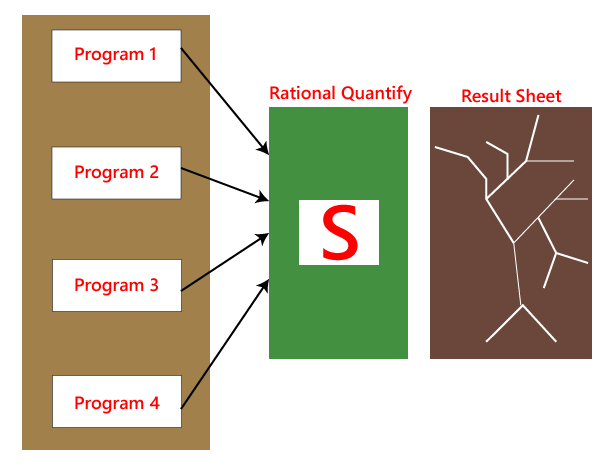
As we know that the developer is performing white box testing, they understand that the code is running slow, or the performance of the program is also getting deliberate. And the developer cannot go manually over the program and verify which line of the code is slowing the program.
To recover with this condition, we have a tool called Rational Quantify, which resolves these kinds of issues automatically. Once the entire code is ready, the rational quantify tool will go through the code and execute it. And we can see the outcome in the result sheet in the form of thick and thin lines.
Here, the thick line specifies which section of code is time-consuming. When we double-click on the thick line, the tool will take us to that line or piece of code automatically, which is also displayed in a different color. We can change that code and again and use this tool. When the order of lines is all thin, we know that the presentation of the program has enhanced. And the developers will perform the white box testing automatically because it saves time rather than performing manually.
Test cases for white box testing are derived from the design phase of the software development lifecycle. Data flow testing, control flow testing, path testing, branch testing, statement and decision coverage all these techniques used by white box testing as a guideline to create an error-free software.
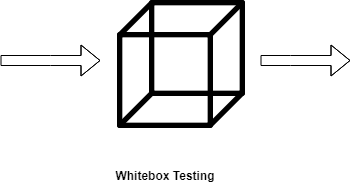
White box testing follows some working steps to make testing manageable and easy to understand what the next task to do. There are some basic steps to perform white box testing.
Generic steps of white box testing
- Design all test scenarios, test cases and prioritize them according to high priority number.
- This step involves the study of code at runtime to examine the resource utilization, not accessed areas of the code, time taken by various methods and operations and so on.
- In this step testing of internal subroutines takes place. Internal subroutines such as nonpublic methods, interfaces are able to handle all types of data appropriately or not.
- This step focuses on testing of control statements like loops and conditional statements to check the efficiency and accuracy for different data inputs.
- In the last step white box testing includes security testing to check all possible security loopholes by looking at how the code handles security.
Reasons for white box testing
- It identifies internal security holes.
- To check the way of input inside the code.
- Check the functionality of conditional loops.
- To test function, object, and statement at an individual level.
Advantages of White box testing
- White box testing optimizes code so hidden errors can be identified.
- Test cases of white box testing can be easily automated.
- This testing is more thorough than other testing approaches as it covers all code paths.
- It can be started in the SDLC phase even without GUI.
Disadvantages of White box testing
- White box testing is too much time consuming when it comes to large-scale programming applications.
- White box testing is much expensive and complex.
- It can lead to production error because it is not detailed by the developers.
- White box testing needs professional programmers who have a detailed knowledge and understanding of programming language and implementation.
Techniques Used in White Box Testing
| Data Flow Testing | Data flow testing is a group of testing strategies that examines the control flow of programs in order to explore the sequence of variables according to the sequence of events. |
| Control Flow Testing | Control flow testing determines the execution order of statements or instructions of the program through a control structure. The control structure of a program is used to develop a test case for the program. In this technique, a particular part of a large program is selected by the tester to set the testing path. Test cases represented by the control graph of the program. |
| Branch Testing | Branch coverage technique is used to cover all branches of the control flow graph. It covers all the possible outcomes (true and false) of each condition of decision point at least once. |
| Statement Testing | Statement coverage technique is used to design white box test cases. This technique involves execution of all statements of the source code at least once. It is used to calculate the total number of executed statements in the source code, out of total statements present in the source code. |
| Decision Testing | This technique reports true and false outcomes of Boolean expressions. Whenever there is a possibility of two or more outcomes from the statements like do while statement, if statement and case statement (Control flow statements), it is considered as decision point because there are two outcomes either true or false. |
Difference between white-box testing and black-box testing
Following are the significant differences between white box testing and black box testing:
| White-box testing | Black box testing |
|---|---|
| The developers can perform white box testing. | The test engineers perform the black box testing. |
| To perform WBT, we should have an understanding of the programming languages. | To perform BBT, there is no need to have an understanding of the programming languages. |
| In this, we will look into the source code and test the logic of the code. | In this, we will verify the functionality of the application based on the requirement specification. |
| In this, the developer should know about the internal design of the code. | In this, there is no need to know about the internal design of the code. |
